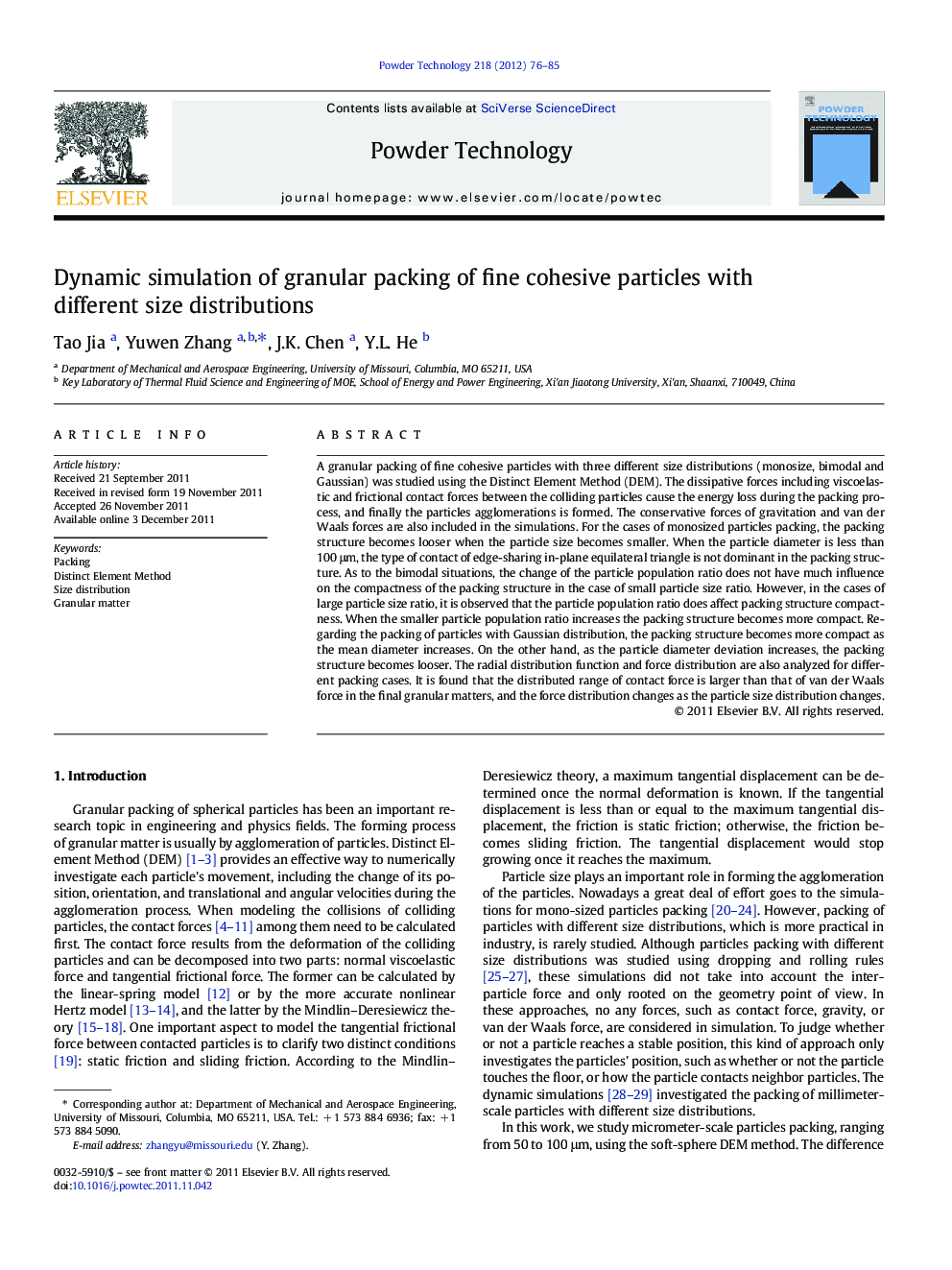| Article ID | Journal | Published Year | Pages | File Type |
|---|---|---|---|---|
| 237353 | Powder Technology | 2012 | 10 Pages |
A granular packing of fine cohesive particles with three different size distributions (monosize, bimodal and Gaussian) was studied using the Distinct Element Method (DEM). The dissipative forces including viscoelastic and frictional contact forces between the colliding particles cause the energy loss during the packing process, and finally the particles agglomerations is formed. The conservative forces of gravitation and van der Waals forces are also included in the simulations. For the cases of monosized particles packing, the packing structure becomes looser when the particle size becomes smaller. When the particle diameter is less than 100 μm, the type of contact of edge-sharing in-plane equilateral triangle is not dominant in the packing structure. As to the bimodal situations, the change of the particle population ratio does not have much influence on the compactness of the packing structure in the case of small particle size ratio. However, in the cases of large particle size ratio, it is observed that the particle population ratio does affect packing structure compactness. When the smaller particle population ratio increases the packing structure becomes more compact. Regarding the packing of particles with Gaussian distribution, the packing structure becomes more compact as the mean diameter increases. On the other hand, as the particle diameter deviation increases, the packing structure becomes looser. The radial distribution function and force distribution are also analyzed for different packing cases. It is found that the distributed range of contact force is larger than that of van der Waals force in the final granular matters, and the force distribution changes as the particle size distribution changes.
Graphical abstractInitially there are 4500 (15 × 15 × 20) particles assigned in a rectangular space. The figure shows the Gaussian particles packing process for the particle diameters ranging from 50 μm to 100 μm with the particle diameter mean value of 75 μm and the diameter deviation of 5 μm.Figure optionsDownload full-size imageDownload as PowerPoint slideHighlights► Fine cohesive particle packing with different particle size distributions is modeled. ► Monosized particles packing are affected by particle size. ► Bimodal particles packing are affected by particle population and size ratios. ► Gaussian particles packing are affected by mean and deviation of particle size.
